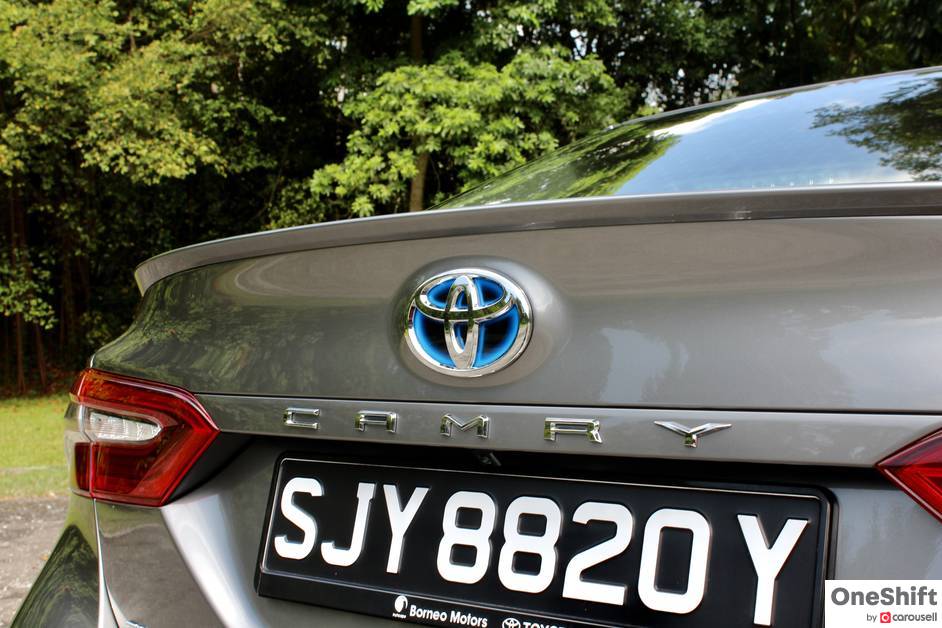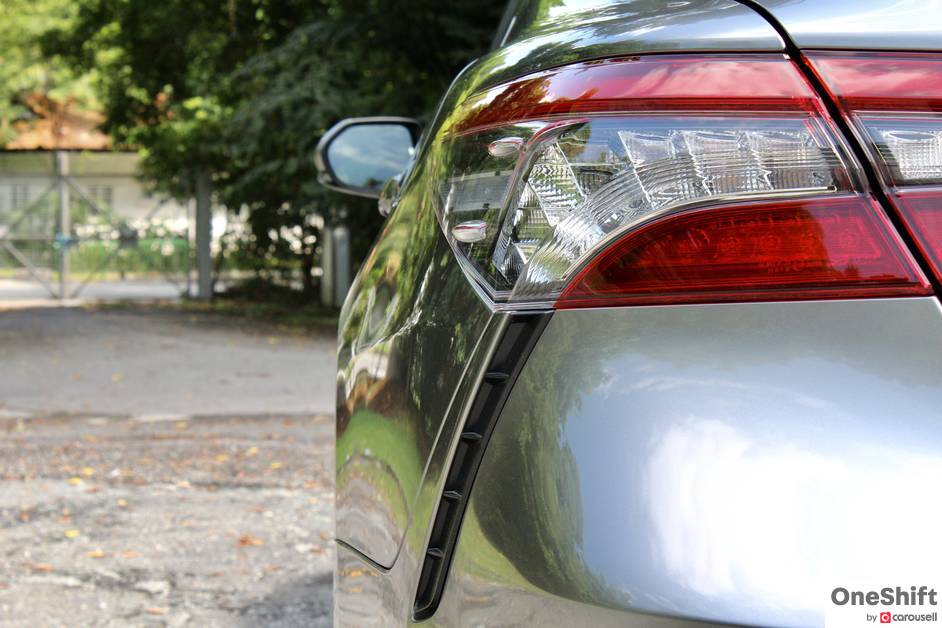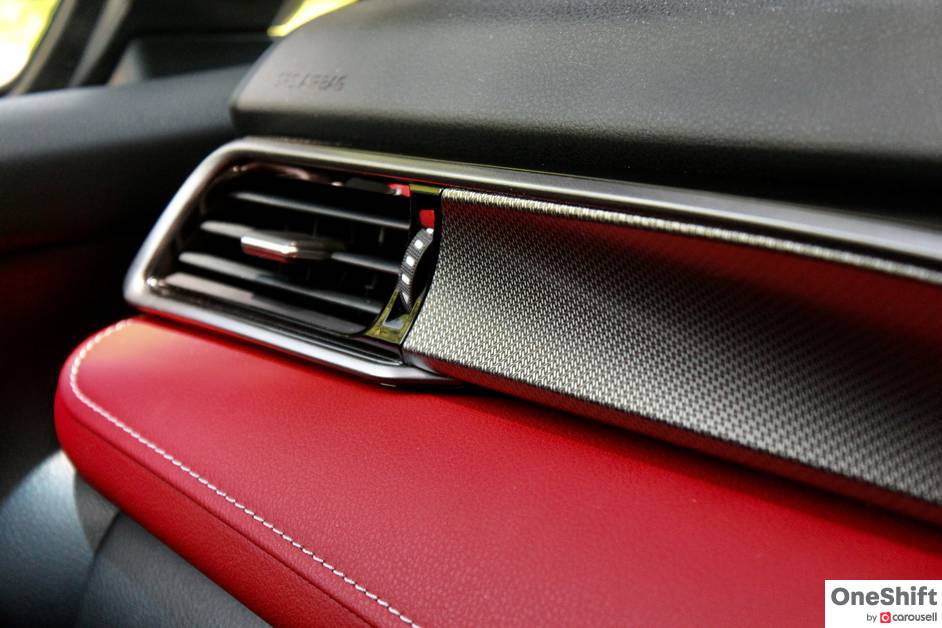Toyota Camry 2.5 Hybrid Review - An Enduring Icon
The Toyota Camry is one of the most iconic family sedans of all time, having built a reputation over many years as a car that was practical, dependable, and reliable. However, the car is also sometimes seen as boring. With the new Toyota Camry Hybrid, the icon has been reborn, and is sportier, quicker, and more beautiful than before. Find out what makes this Camry different from previous generations.


Growing up, many of us will have at least one memory of a Toyota Camry at some point. For me, the Camry was the de-facto rental car during my family’s numerous driving holidays to Australia and New Zealand, leaving me with many fond memories from my many hours spent in the backseat of various Camrys over the years. The reasons why the Camry became my family’s default rental car for long journeys were largely logical in nature - A big and practical boot, good rear legroom, a smooth and comfortable ride, and perhaps most importantly - a strong reputation of reliability. I’m sure most of you will agree, that the long lineage of Camrys have excelled in, and will be remembered for at least one of those things.

Unfortunately though, where we remember the stoic and dependable nature of the Camry fondly, its aesthetics and overly utilitarian approach to its interior will perhaps not be remembered so fondly, if remembered at all. In fact, my most distinct memories of a Camry interior seem to be of the gaudy wooden trims plastered onto a plastic-feeling cabin. Luckily, all this seems to be a thing of the past, and the latest Camry hints at improvements that seem to be taking it away from its roots as the “uncle” car that it was once known for.
One look at the new car and you’ll instantly realise that the car feels like it's a different person - like the uncle that it once was, had somehow found his way into an H&M store and bought clothes meant for someone half his age. The angular front fascia looks focussed instead of bored, and the curvy lines give it a much sexier appearance than before. On our test car, the Precious Metal colour job accentuates all this, giving the car an appearance that is both modern, sporty, and relevant. In fact, with the 18 inch wheels found on the Elegance trim car, the car looks so good that the hybrid moniker and blue Toyota logo doesn’t even seem to taint its image one bit. Overall, the step up from the old car in terms of design is admirable, and extremely noticeable.

While the car still looks mid-market, and you won't be confusing it with a continental car anytime soon, a quick chat with a colleague revealed that the she thought the Camry actually looked better than a Skoda Superb, and more interesting than a Volkswagen Passat, which is a real compliment to the Camry. While a subjective topic, it is ultimately clear that the Camry has moved on from being the most frumpy car of the lot, to something that features in the discussion on which is the best looking car in this class, with the Camry actually being in contention for the title.
Getting into the cabin of the Camry, I immediately noticed how much better the doors on the car felt. They were not quite as solid and hefty as those on a continental car, but definitely way better than the average Japanese or Korean car on the market. I personally like heavy, chunky doors, and am quite agreeable to the Camry heading in this direction. Once in the cabin, I was happy to see that the downright horrible faux wooden trims of old had been replaced by more modern looking panels, and a full leather steering wheel. Overall, the car definitely feels more contemporary and there is definitely some effort to connect with a younger, more dynamic demographic here. That said, the cabin still has some way to go in terms of aesthetics, and there are still many aspects of the interior that a more discerning demographic might find hard to accept. For instance, the locking mechanisms on the camry activate with the most plasticky and resounding “clack” I have heard in awhile, reminding us that utilitarianism still flows strongly in the Camry’s veins.

Truth is, there isn’t really much to fault in the cabin by way of functionality - the car has everything you need, including electric steering adjustment, electric seats, ventilated seats, touchscreen infotainment with Apple Carplay and Android Auto, dual zone climate control, drive mode selection, wireless phone charging bay, USB ports, and a heads up driving display unit. In this way, the Camry continues to be an extremely practical car to use, with a good checklist of equipment, good rear legroom, and a competitively sized boot with knockdown rear seats. If however, you require said practicality to be delivered with more finesse and aesthetics, and that such things are intrinsic to your lifestyle, then perhaps the value of a camry is somewhat lost on you, and you might do better paying more for a continental sedan which will do the same thing, albeit with more flair. I’ll admit, on the first day of testing, I was not a fan of the interior. However, by the third day of testing, I couldn’t care less, as long as what I needed worked - which it did.
I’ve always been a fan of turbocharged engines paired to a dual clutch transmission or a torque converter for use in Singapore’s driving conditions, and I still am. However, the Camry Hybrid provided quite an interesting proposition due to the implementation of Toyota’s E-CVT, which is essentially a CVT, with the addition of a physical first gear. To put this technology into context, a CVT works on the basic principle of speed and rev matching, which means that under acceleration, it is common for the transmission to rev up and drone, while waiting for the car's engine to propel the car to a speed that matches the revs, thus ending the droning. Generally speaking, with the exception of Audi applying this to its cars for a short time, the CVT has always been an extremely Asian concept, one that supposedly prioritises fuel economy over driving dynamics. With the new E-CVT however, the car feels much more positive moving off the line, even without hybrid power, and has significantly improved the driving dynamics of the Camry, especially around city conditions. Similarly, the electrical motors from the car’s hybrid drivetrain also deliver a spritely injection of power when moving off, all without that CVT drone. This is noteworthy, given that the naturally aspirated Camry’s of old were not particularly suited for city driving in a place like Singapore.

Truthfully, I found myself particularly enjoying the drive when in EV mode, or whenever the car deemed it appropriate to be powered by electrical power. The car was silky smooth, quick on its feet, and I quite liked the electrical hum produced by the motors. With rising oil prices and everyone worrying about fuel economy in recent times, the Camry Hybrid came to us at an interesting time, providing a platform where drivers like myself who aren’t quite ready to buy a fully electric car, can perhaps dip our toes into that sphere, allowing some insight into what it might feel like to drive an electric car in the future. I for one, am quite sold, and would be excited to see what a fully electric Camry in the future might feel like to drive. You see, apart from the CVT drone that I so dislike, the Camry’s chassis has been optimised for comfort, and in its element, the car really does do what it says on the brochure - and that is to be comfortable. So if such a chassis set up were to be accompanied by electric motors only, without the need for that massive 2.5L aspirated engine paired to a CVT, that might just be a match made in heaven. However, I digress. With all this in mind, the Camry Hybrid provided a faultless drive for day to day commuting and level headed driving. I clocked mileage figures of about 18.9 km/l, which is fantastic for a full sized sedan like the Camry, considering that I went through a good mixture of highway and city driving, and wasn’t particularly gentle on the car either.
The Camry is likely to excel in providing what majority of people will deem as an extremely agreeable ride quality. The car is comfortable and spacious in the rear with ample legroom for most adults, and adequate headroom for anyone up to 178cm tall. While sticking to its roots as a utilitarian option, it is truly nice to know that the Camry has responded more than adequately to be relevant to today’s car ownership requirements in SIngapore. The E-CVT has significantly improved driving dynamics on the Camry, and the hybrid drivetrain has allowed the Camry to be economical, more relevant to the demands of city driving, and more powerful without the need for a turbocharger. People have said in the past that the Camry is like the Black Label of full sized sedans - anything lousier is bad, and anything better is good - and that remains true to an extent, but I think you’ll find that the Camry has now pushed this hypothetical benchmark just a little bit higher than before. The Camry is and always will be one of the most iconic family sedans of all time, a reputation that has been paved by the dependability and reliability it has offered to consumers for so many years - but it's nice to know that even an enduring icon like the Camry, can still find new ways to be useful and relevant to today’s market.
Find a brand new Toyota Camry on Carousell!
Credits:








Get the Best Price for your used car
from 500+ dealers in 24 hours

- Convenient and Hassle-Free
- Consumer Protection
Transparent Process
With No Obligation








